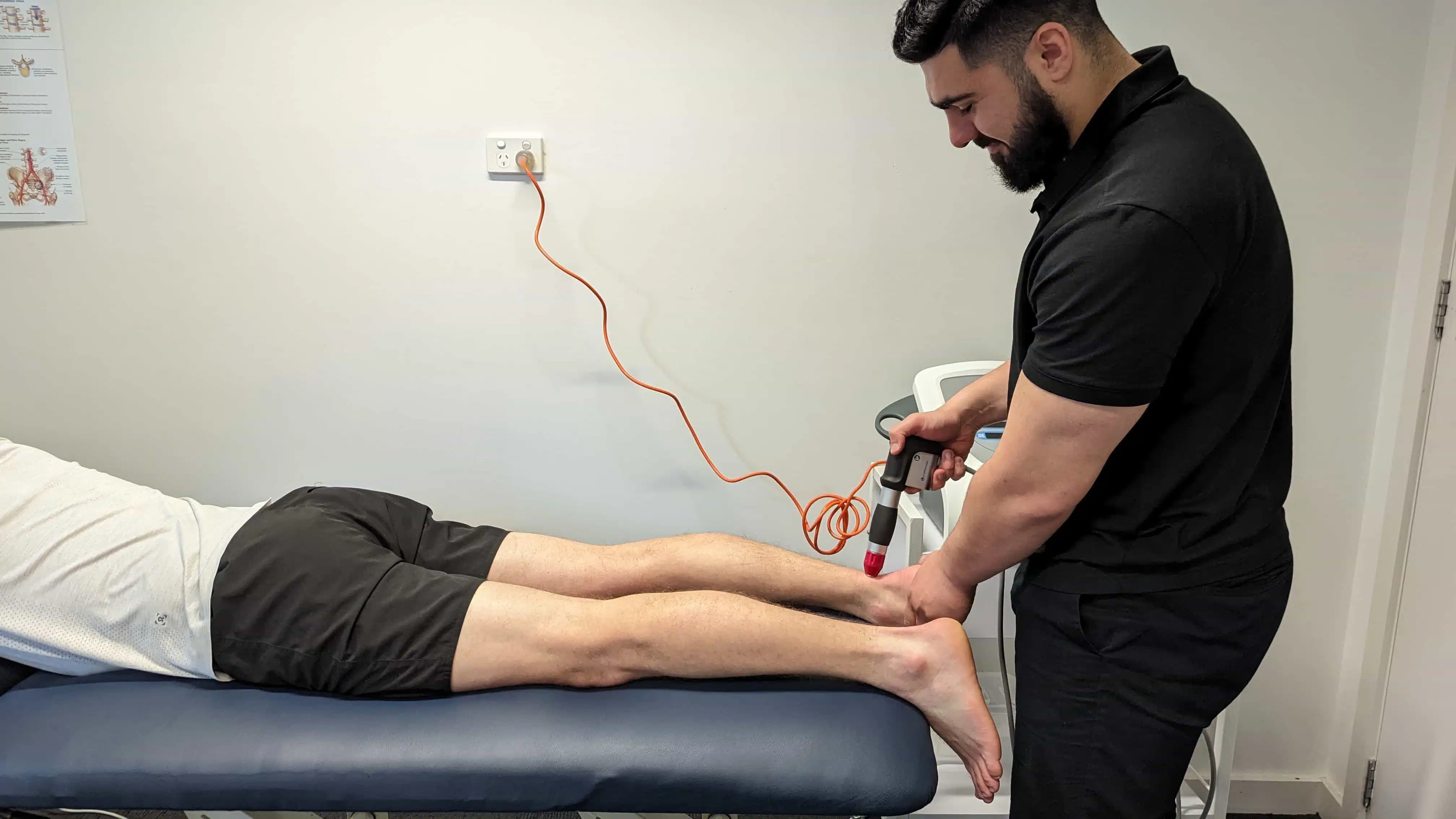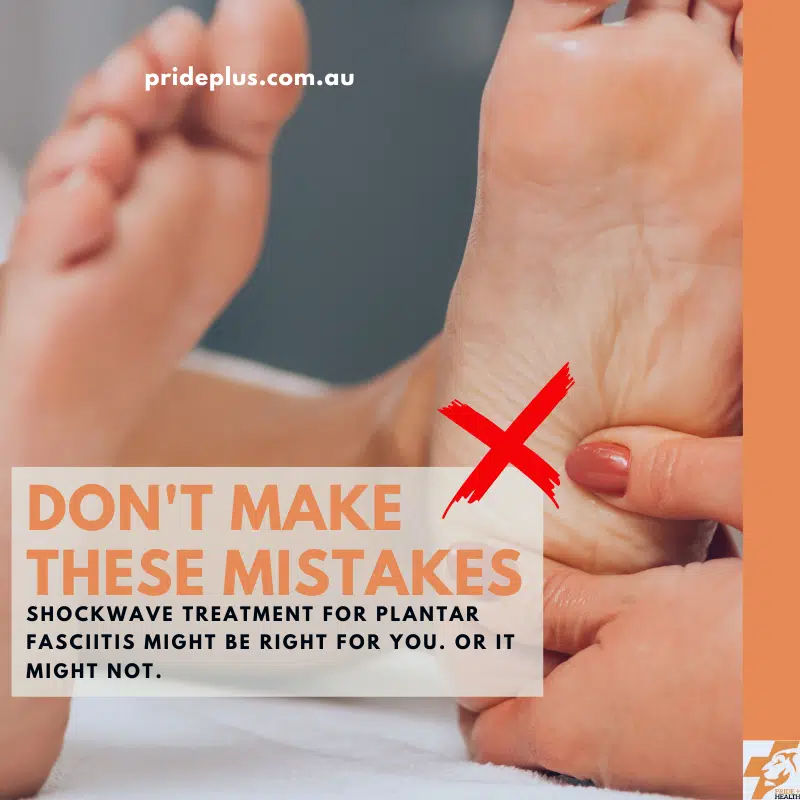Shockwave treatment for plantar fasciitis is available at our PridePlus Health clinics. But before you take the plunge, here’s what you need to know.
If you want to rehabilitate your plantar fasciitis with shockwave therapy don’t make these mistakes.
When you’re struggling with heel pain, particularly heel pain that has been around for a long time you can feel desperate. Clinging to hope that this one thing is going to fix your pain. Just stop for a second. Listen to your rational mind.
How long has your plantar fasciitis pain been there? A while…
What has led it to be sore? Oh, it’s been overworked…
And what changes have you been able to implement? I’ve got my new shoes and orthotics but I haven’t yet started my exercise plan. I’ve just been so busy and how can exercise even help when I’m so sore?
So, your rational mind says that this plantar fasciitis heel pain you’ve been experiencing has been there a while, it’s because it’s overworked but there’s too much going on (and maybe you’re not quite convinced) to stick religiously to your exercise plan.
So how are you going to recover from your heel pain and achieve the activity levels you want again?
First, here’s what not to do when considering shockwave treatment for plantar fasciitis.
Don’t abandon your treatment plan.
Shockwave therapy has proven to be successful in helping others with chronic (over 6-week duration) plantar fasciitis pain when it’s part of a comprehensive treatment plan. If your podiatrist has prescribed shoe changes, orthotics, strapping or exercises?
Well, you’re still going to need to do these too…
And if you have heel pain but not a diagnosis of plantar fasciitis or Achilles tendinitis (maybe you have one of the 6 most common causes of heel pain – find out from this test) don’t start shockwave treatment. It’s not likely to help you in the long term.

Also, don’t start shockwave treatment for plantar fasciitis if you are pregnant, have a malignant bone cancer of your heel, or if you’re on strong blood thinners. These are all contraindications of shockwave therapy.
And don’t start shockwave treatment for plantar fasciitis if you are expecting an immediate fix. While you can expect some changes straight away, it usually takes at least 3 and up to 6 sessions of shockwave therapy for plantar fasciitis to get your desired result.
So when should you “do” shockwave treatment for plantar fasciitis?
More people have success with shockwave therapy when they do the following…
So you’re ready to start shockwave treatment for plantar fasciitis?
Here’s how to give your body the best chance at success.
Do:
- Follow your plan.
- If your podiatrist recommended shoes or strapping do everything you can to make these changes.
- Rehabilitate with exercise too.
- Resistance training exercises are often needed to build capacity in the calf muscles in your leg. You will need to get these done as well but not within 48 hours after having a shockwave session.
- Commit to at least 3 sessions.
- You can expect improvements sooner but you will need at least 3 sessions (spaced around 1 week apart) before large tissue changes will have occurred.
- Reflect on your progress
- When we think back about pain, our mind goes to binary. I’m sore / or I’m not sore. We think, “shivers my heel is still sore after all these weeks”. However, during a successful treatment plan for plantar fasciitis what will be happening is your pain levels will be decreasing, they might go from an 8/10 to a 4/10. Your activity levels will be increasing too. Maybe you used to only walk 400m and now you can jog 4 laps of the oval before your heel starts getting too sore.
If you’re able to do these as part of your shockwave treatment for plantar fasciitis program you’ll have the best chance at success.
About the Author

Melbourne Podiatrist Tim Mulholland wants you to be an informed consumer when it comes to your heel pain treatment. There are lots of different treatment options for plantar fasciitis out there. Depending on the factors that contribute to your heel pain they will have varying degrees of success.
References
- The effectiveness of extracorporeal shock wave therapy in lower limb tendinopathy: a systematic review (2014)
- Extracorporeal shock wave therapy is effective in treating chronic plantar fasciitis: a meta-analysis of RCTs (2013).
- The biological effects of extracorporeal shock wave therapy (eswt) on tendon tissue (2012)
- Don’t start shockwave therapy in Melbourne without reading this first.




